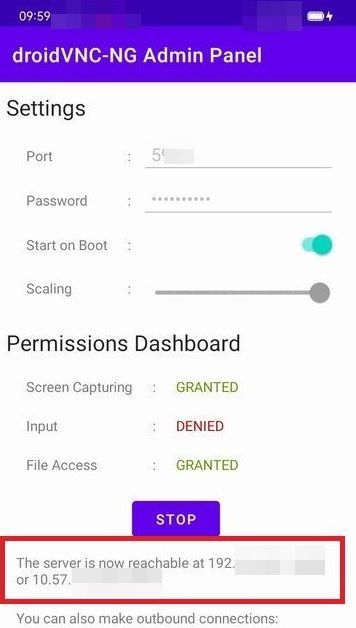Remote connections are a crucial part of modern computing, especially when dealing with devices like the Raspberry Pi. Whether you're configuring a headless setup or troubleshooting network issues, understanding how to fix 'Connection Refused' errors in VNC is essential. This guide will walk you through common issues and solutions for ensuring smooth VNC connectivity on your Raspberry Pi.
Encountering a 'Connection Refused' error while trying to establish a VNC connection can be frustrating, but it's often due to simple configuration issues. From ensuring that the correct ports are open to verifying that the VNC server is active, this step-by-step guide will help you diagnose and resolve these problems effectively. Let's dive into the specifics of setting up and troubleshooting VNC connections on Raspberry Pi.
Tigervnc Viewer Does Not Connect To Realvnc Server - Applications
One common issue users encounter when attempting to connect Tigervnc Viewer to a RealVNC server on Raspberry Pi is the CConn: unable to connect to socket: Connection refused (111) error. This typically occurs when there's a mismatch between the VNC server and client configurations. For instance, installing the Tigervnc server on Raspberry Pi and using the Tigervnc Viewer may not always work seamlessly with RealVNC servers.
To address this, ensure that both the server and viewer versions are compatible. If you have a RealVNC server running on a Raspberry Pi 4 in headless mode, make sure the RealVNC Viewer is installed on your computer. In this case, the server listens on port 5900, which should be confirmed by running commands such as `ss -an | grep LISTEN | grep 59` to verify that the server is actively listening on the correct port.
Additionally, check if any firewall rules might be blocking the connection. Disabling the firewall temporarily or allowing traffic on port 5900 can help determine if this is the root cause of the issue.
Understanding Network Connectivity in Raspberry Pi
When connecting to a Raspberry Pi remotely, it's important to understand how IP addresses function within a Local Area Network (LAN). Each device connected to the LAN is assigned a unique IP address, which serves as its identifier. For remote access via SSH or VNC, knowing the Raspberry Pi's IP address is critical. Tools like `ifconfig` or `ip addr` can help identify the Pi's IP address.
Once the IP address is known, you can attempt to establish a VNC connection from another machine. However, if the connection fails with a 'Connection Refused' message, it could indicate that the VNC service isn't properly configured or enabled. Ensure that the VNC server is active by checking its status using commands like `systemctl status vncserver-x11-serviced.service`.
In some cases, the issue might stem from incorrect settings in the VNC server configuration file. Reviewing and adjusting these settings to match your network environment can resolve connectivity problems.
VNC Connection Challenges in Headless Mode
Establishing a VNC connection to a Raspberry Pi in headless mode presents unique challenges compared to setups with an HDMI monitor attached. Without visual feedback, diagnosing issues becomes more complex. A frequent problem is the inability of VNC Viewer to connect in headless mode, even when all configurations appear correct.
If the connection is refused despite entering the correct IP address, it often means the VNC interface is disabled. To rectify this, navigate to the Raspberry Pi configuration menu and enable the VNC interface under the interfaces section. This ensures that the VNC server starts automatically upon boot.
Another potential issue involves outdated software or scripts. For example, using older tutorials designed for previous Raspberry Pi models might lead to configuration mismatches. Always ensure that you're following the latest guidelines and using updated software packages to avoid compatibility issues.
Troubleshooting Common VNC Errors
Errors like telnet: Unable to connect to remote host: Connection refused can arise during VNC setup. These messages usually point to issues with the VNC service itself or network configurations. Double-check that the VNC server is running and that no conflicting services are occupying the designated port.
User errors also play a significant role in failed connections. Mistakes in script execution or overlooking critical steps in the setup process can result in 'Connection Refused' errors. Carefully reviewing each step and consulting official Raspberry Pi documentation can help identify and correct such mistakes.
In some instances, switching to alternative VNC clients or servers might provide better results. Experimenting with different tools, such as Remmina for Ubuntu-based systems, can offer insights into whether the issue lies with the specific software being used.

